|
Visit the Rondanini Pieta at the Castle Sforzesco in Milan, Italy

Ronadini Pieta, first version:1552/53 2nd version 1556/57
Castello Sforzesco Museum, Milan,Italy
Michelangelo was working on this statue 6 days before he died
at age 89, on February 18, 1564. In his final days Michelangelo
spent would"two days hammering by the fire and three
days in bed", This is from a letter dated June 11, 1564,
after his death, from to Daniele da Volterra to Michelangelo’s
nephew Leonardo.
The statue was found in Michelangelo's house in Rome after he died.
It was lost for centuries till the Rondanini family acquired it after 1744.
It was thought to be lost till the city of Milano, Italy,
bought it from the Rondanini family in 1952,
for about $160,000.
In 2003, Milan, formed a committe to clean and refurbish, and
research the statue. For centuries it had stood outside the Rondanini family
home getting a green glow whenever it rained.
Read Christopher Jones's philospohical dissertation on the Rondanini statue in 2009

the right arm was recarved twice
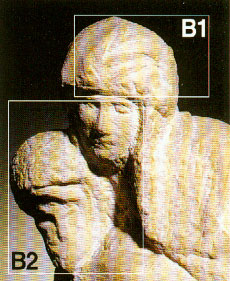
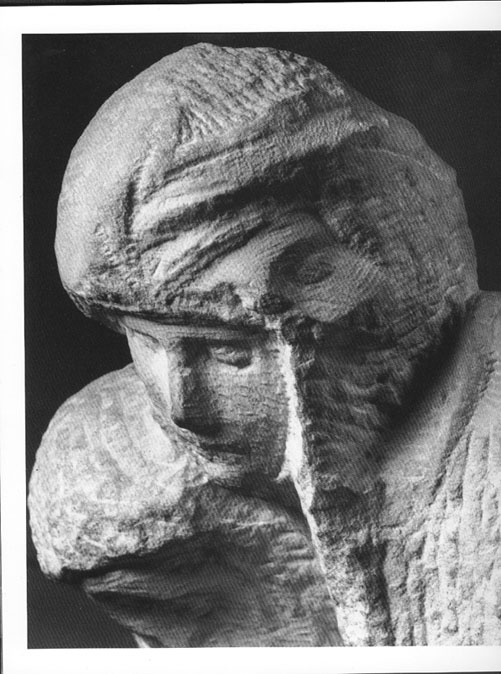
the virgin's face was recarved twice
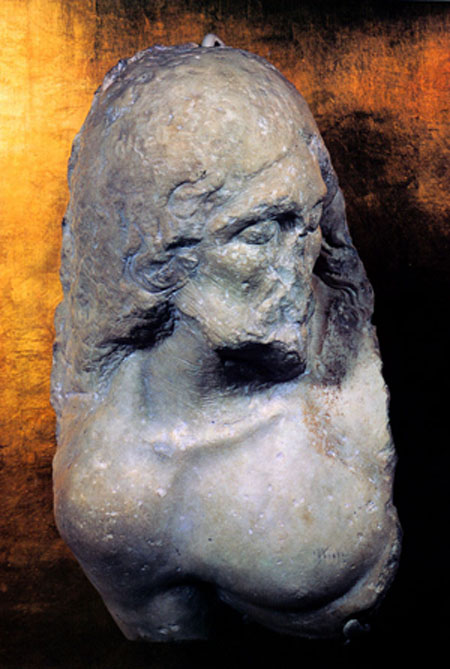
Rondanini Pieta Stone Fragment (also called the Mutilated
Christ was found in 1973 when a retaining wall was being
demolished in the parish of Santa Maria in Trastevere. The
building's contractor, Aurelio Schiavo, then became its legal owner.
A mineralogical comparison examination from a uncarved
sample of the fragment and the from the Pieta was inconclusive.
Because the samples were too small. Later, measures of radioactivity
from the two statues showed that they were not from the same
block of marble.
During the 2003 restoration of the Rondanini Pieta
the statues were placed side by side and the differences can
be easily seen. On the Pieta you can see Michelangelo's "modelling"
using his favorite "claw chisel". Whereas, on the Christ fragment
it was carved with a flat chisel and shows no "modeling".
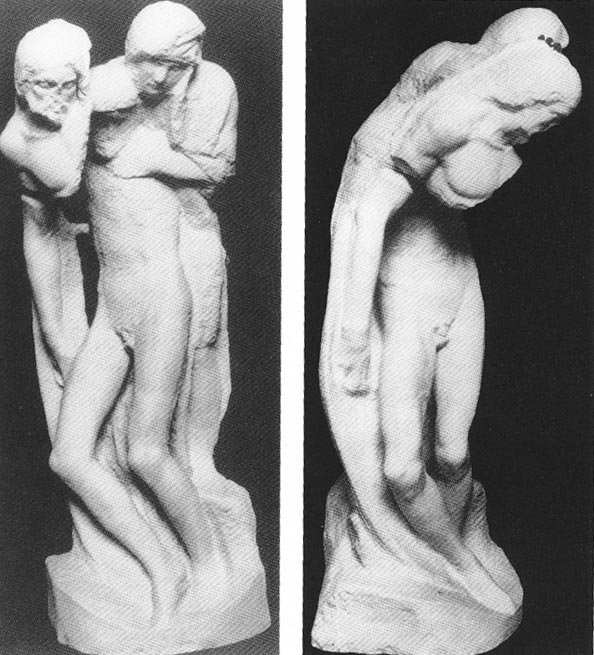
This shows how the fragment would have been reattached to the Statue
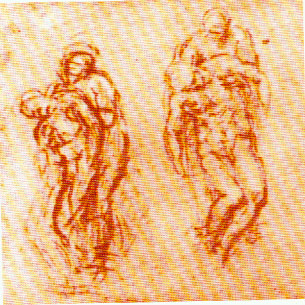
A early M sketch for the statue showing 2 versions (Ashmolean Museum, Oxford, England)